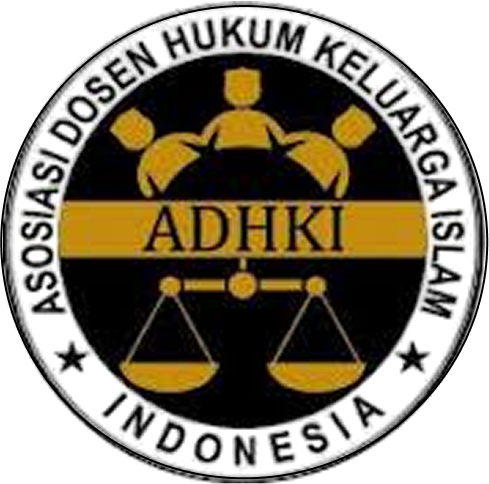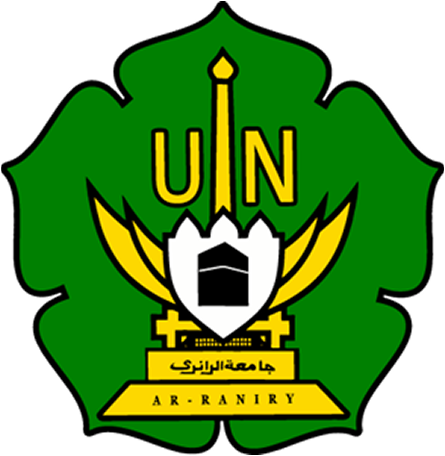Religious Dialogue and Astronomy from the Perspective of Indonesian Muslim Scholars
DOI:
https://doi.org/10.22373/sjhk.v7i1.12406Keywords:
religious dialogue, hadith, Islamic astronomy, muslim scholarsAbstract
Dialogue between religion and science is a necessity, because both of them can mutually reinforce the sources of Islamic law. The astronomical approach in the study of hadith makes a significant contribution to the development of astronomy. This article aims to examine the thoughts of an Indonesian Muslim scholar, namely Syamsul Anwar, who offers the concept of the interconnection of astronomy with hadith (especially astronomical hadith). This type of research is a literature by conducting a descriptive analysis of Syamsul Anwar's thoughts. The results of the study show that his contribution to the study of astronomy through an astronomical approach is able to strengthen understanding of the position of a hadith not only from a shari'ah perspective but at the same time being able to explain the meaning of a text using scientific principles (science). The study shows the importance of contextualization and interconnection between Islamic scholarship and other scientific fields. Thus, the efforts that have been made by Syamsul Anwar further strengthen the importance of dialogue between religion and science
References
Abdullah, M Amin. “Religion, Science, and Culture: An Integrated, Interconnected Paradigm of Science.” Al-Jami’ah: Journal of Islamic Studies 52, no. 1 (2014): 175–203.
Adib, Shohibul. “Pemikiran Harald Motzki Tentang Hadis (Telaah Metodologi Penelitian Harald Motzki Terhadap Kitab Al-Musannaf Karya Abdurrazzaq As-San’ani).” An-Nidzam 4, no. 1 (2017): 103–25. https://doi.org/10.33507/an-nidzam.v4i1.27.
Anwar, Syamsul. “Integrasi-Interkoneksi Ilmu: Studi Tentang Hukum Bisnis Syariah.” Asy-Syir’ah: Jurnal Ilmu Syari’ah Dan Hukum 48, no. 2 (2014): 389–408.
———. Interkoneksi Studi Hadis Dan Astronomi. Suara Muhammadiyah, 2011.
———.“KaryaIlmiah,”n.d. https://scholar.google.com/citations?user=xnNBW7sAAAAJ&hl=id&oi=sra.
———. “Metode Penetapan Awal Bulan Qamariah.” Journal Analytica Islamica 1, no. 1 (2012): 32–56.
———. “Metode Usul Fikih Untuk Kontekstualisasi Pemahaman Hadis-Hadis Rukyat.” Tarjih: Jurnal Tarjih Dan Pengembangan Pemikiran Islam 11, no. 1 (2013): 113–30.
Arifin, Zainul. “Model-Model Relasi Agama Dan Sains.” Psikoislamika 5, no. 2 (2008).
Barbour, Ian G. Juru Bicara Tuhan: Antara Sains Dan Agama, Terj. ER Muhammad, Bandung: Mizan, 2002.
———. “On Typologies for Relating Science and Religion.” Zygon® 37, no. 2 (2002): 345–60.
———. Religion in an Age of Science. Harper & Row San Francisco, 1990.
Birtel, Frank T. “Commentary On The Science‐Religion Controversy.” Zygon®. Wiley Online Library, 1993.
Brown, Jonathan A C. “How We Know Early Ḥadīth Critics Did Matn Criticism and Why It ’ s So Hard to Find.” Islamic Law and Society 15 (2008): 143–84. https://doi.org/10.1163/156851908X290574.
Butar-Butar, Arwin Juli Rakhmadi. Problematika Penentuan Awal Bulan: Diskursus Antara Hisab Dan Rukyat. Malang: Madani, 2014.
Cantor, Geoffrey, and Chris Kenny. “Barbour’s Fourfold Way: Problems with His Taxonomy of Science‐religion Relationships.” Zygon® 36, no. 4 (2001): 765–81.
Dahlan, Moh. “Relasi Sains Modern Dan Sains Islam : Suatu Upaya Pencarian Paradigma Baru.” Salam : Jurnal Ilmu - Ilmu Sosial 12, no. 2 (2009).
Ecklund, Elaine Howard, and Jerry Z Park. “Conflict between Religion and Science among Academic Scientists?” Journal for the Scientific Study of Religion 48, no. 2 (2009): 276–92.
Ecklund, Elaine Howard, Jerry Z Park, and Katherine L Sorrell. “Scientists Negotiate Boundaries between Religion and Science.” Journal for the Scientific Study of Religion 50, no. 3 (2011): 552–69.
Evans, John H. “Epistemological and Moral Conflict between Religion and Science.” Journal for the Scientific Study of Religion 50, no. 4 (2011): 707–27.
Frifana, Sherly Olyfiya. “Hadis Matla ’ Hilal ( Tempat Terbitnya Hilal Dan Tempat Terjadinya Hilal ).” Al - Afaq : Jurnal Ilmu Falak Dan Astronomi 2, no. 1 (2020): 15–30.
Gledhill, P J. “Motzki’s Forger: The Corpus of the Follower ʿAṭāʾ in Two Early 3rd/9th-Century Ḥadīth Compendia.” Islamic Law and Society 19, no. 1–2 (2012): 160–93.
Haque, Farhana, Anika Hossain Orthy, and Shahnewaz Siddique. “Hadith Authenticity Prediction Using Sentiment Analysis and Machine Learning.” In 2020 IEEE 14th International Conference on Application of Information and Communication Technologies (AICT), 1–6. IEEE, 2020.
Hasballah, Khairuddin, Andi Darna, Wardana Said, Hajarul Akbar, Ihdi Karim Makinara, and Faisal Fauzan. “Identifying ‘Illat through Munasabah in Islamic Law: A Perspective of Imam Al-Ghazali.” Samarah: Jurnal Hukum Keluarga Dan Hukum Islam 5, no. 2 (2021): 598–618. https://doi.org/10.22373/sjhk.v5i2.10914.
Hassaine, Abdelaali, Zeineb Safi, and Ali Jaoua. “Authenticity Detection as a Binary Text Categorization Problem: Application to Hadith Authentication.” In 2016 IEEE/ACS 13th International Conference of Computer Systems and Applications (AICCSA), 1–7. IEEE, 2016.
Helmut Reich, K. “How Could We Get to a More Peaceful and Sustainable Human World Society? The Role of Science and Religion.” Zygon® 47, no. 2 (2012): 308–21.
Ilham. “Mengenal Syamsul Anwar, Pakar Hukum Islam Dari Riau.” Muhammadiyah.or.id, 2022. https://muhammadiyah.or.id/mengenal-syamsul-anwar-pakar-hukum-islam-dari-riau/.
Jafar, Tarmizi M., and Arifah Fitria. “Understanding Multiple Interpretations on the Hadith That Husbands Allow Wives to Have Outdoor Activities: A Study of Islamic Law Perspectives.” Samarah: Jurnal Hukum Keluarga Dan Hukum Islam 5, no. 1 (2021): 210–31. https://doi.org/10.22373/sjhk.v5i1.9106.
Junaidi, M. Rofiq. “Otentitas Hadis Menurut Harald Motzki.” Al A’raf : Jurnal Pemikiran Islam Dan Filsafat XII, no. 1 (2015): 59–76.
King, David A. “The Culmination of Islamic Sacred Geography.” In Geography and Religious Knowledge in the Medieval World, 179–88. De Gruyter, 2021.
Machzumy. “Pengaruh Curah Hujan Terhadap Keberhasilan Rukyat Hilal Pada Observatorium Lhoknga Aceh.” Samarah 3, no. 1 (2019): 223–39. https://doi.org/10.22373/sjhk.v3i1.5061.
McGrath, Alister E. Science & Religion: A New Introduction. John Wiley & Sons, 2020.
———. “Science & Religion: An Introduction,” 1999.
McPhetres, Jonathon, and Thuy vy T. Nguyen. “Using Findings from the Cognitive Science of Religion to Understand Current Conflicts between Religious and Scientific Ideologies.” Religion, Brain and Behavior 8, no. 4 (2018): 394–405. https://doi.org/10.1080/2153599X.2017.1326399.
Minhaji, Akh. Tradisi Akademik Di Perguruan Tinggi. Yogyakarta: Suka Press, 2013.
Motzki, Harald. “Motzki’s Reliable Transmitter: A Short Answer to P. Gledhill.” Islamic Law and Society 19 (2012): 194–99.
Musa, Aisha Y. Ḥadīth As Scripture : Discussions on the Authority of Prophetic Traditions in Islam. New York: Palgrave Macmillan, 2008. https://doi.org/10.1057/9780230611979.
Muslih, Mohammad. “Tren Pengembangan Ilmu Di UIN Sunan Kalijaga Yogyakarta.” Epistemé: Jurnal Pengembangan Ilmu Keislaman 12, no. 1 (2017).
O’Brien, Timothy L, and Shiri Noy. “Traditional, Modern, and Post-Secular Perspectives on Science and Religion in the United States.” American Sociological Review 80, no. 1 (2015): 92–115.
Refaee, Eshrag Ali. “Detecting Hadith Authenticity Using a Deep-Learning Approach.” Scientific Journal of King Faisal University Basic and Applied Sciences 23, no. 1 (2022): 80–84. https://doi.org/10.37575/b/sci/210084.
Royyani, Muh Arif, Abdul Mufid, M Ihtirozun Ni’am, Alfian Qodri Azizi, and Achmad Azis Abidin. “Shahadah’Ilmy; Integrating Fiqh and Astronomy Paradigm in Determining The Arrival of Lunar Months in Indonesia.” AL-IHKAM: Jurnal Hukum & Pranata Sosial 16, no. 2 (2021): 503–24.
Suwarno, Rahmadi Wibowo. “Pendekatan Interkoneksi Dalam Studi Hadis (Studi Pemikiran Syamsul Anwar).” Al-Misbah 5, no. 2 (2017).
Voll, John O. “Hadith Scholars and Tariqahs: An Ulama Group in the 18th Century Haramayn and Their Impact in the Islamic World.” Journal of Asian and African Studies Invites XV, no. 3–4 (1980).
Wazna, Ruhama. “Metode Kontemporer Menggali Otentisitas Hadis ( Kajian Pemikiran Harald Motzki ).” Jurnal Ilmiah Ilmu Ushuluddin 17, no. 2 (2018): 112. https://doi.org/10.18592/jiu.v17i2.2243.
Yahya, Agusni, and Muslim Zainuddin. “The Interpretation of the Hadith on the Characteristics of Women and Its Implications for Islamic Law.” Samarah: Jurnal Hukum Keluarga Dan Hukum Islam 5, no. 1 (2021): 276–96. https://doi.org/10.22373/sjhk.v5i1.9593.
Yalçinkaya, M Alper. “Science,‘Religion,’ And ‘Science‐And‐Religion’ In The Late Ottoman Empire.” Zygon® 54, no. 4 (2019): 1050–66.
Zuhri, Misbah Khoiruddin. “Spiritualitas Sains Modern: Pembacaan Terhadap Relasi Agama Dan Sains.” Jurnal Penelitian 14, no. 2 (2017).
Zulfiyah. “Studi Ekploratif Hadis Sebagai Sumber Hukum Islam Tentang Ilmu Falak.” Jurnal Al-Mizan 14, no. 1 (2018): 19–40.
Downloads
Published
Issue
Section
License
Authors who publish in Samarah: Jurnal Hukum Keluarga dan Hukum Islam agree to the following terms:
- Authors retain copyright and grant the journal right of first publication with the work simultaneously licensed Attribution-ShareAlike 4.0 International (CC BY-SA 4.0) that allows others to share the work with an acknowledgment of the work's authorship and initial publication in this journal.
- Authors are able to enter into separate, additional contractual arrangements for the non-exclusive distribution of the journal's published version of the work (e.g., post it to an institutional repository or publish it in a book), with an acknowledgment of its initial publication in this journal.
- Authors are permitted and encouraged to post their work online (e.g., in institutional repositories or on their website) prior to and during the submission process, as it can lead to productive exchanges, as well as earlier and greater citation of published work. (See The Effect of Open Acces)









